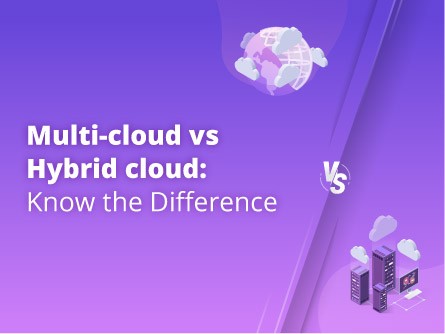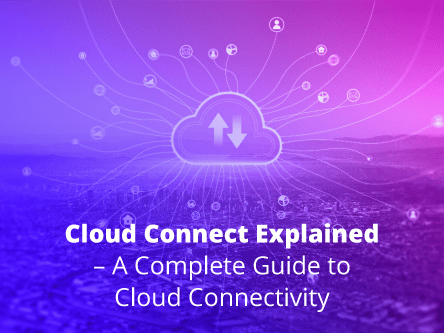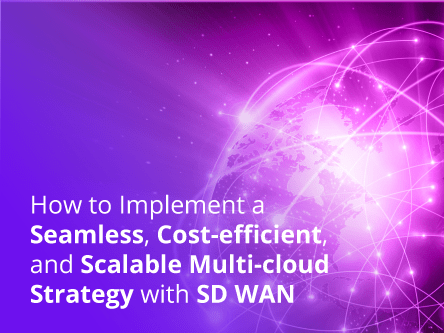Should enterprises adopt a multi-cloud architecture and/or a hybrid cloud connectivity?
With the current global drive to go digital and the pressure to keep up with unprecedented changes, many businesses that were not tapping on the cloud are now rushing to do so.
Even enterprises that were hesitant to cloud adoption are now in a fix as to whether they should go full steam ahead on a multi-cloud architecture and, or a hybrid cloud infrastructure.
First, let us provide a quick summary on the differences between the three major cloud service providers:
| Comparison Values | Amazon Web Services (AWS) | Microsoft Azure | Google Cloud Platform (GCP) |
|---|---|---|---|
| Infrastructure Type | Public cloud | Public cloud with hybrid-friendly support | Public cloud |
| Key Advantages | Dominant market support and global reach huge array of mature services (e.g.. compute, storage, database) Extensive training available Most mature of all three Slowly embracing support for hybrid cloud | Designed to interoperate with customer data centers Friendlier for windows-based and Microsoft-centred infrastructures Broad feature set and support for open source | Strong in deep learning, AI, ML analytics Specialised in high compute work and offers considerable scale and load balancing |
| Key Disadvantages | Difficult to use Confusing costings Pure public cloud with overwhelming options to navigate A hassle to inter-operate with customer data centres | Service experience reportedly less enterprise-ready than expected Issues with tech support, documentation, training and partner ecosystem | Relatively new to the PaaS scene. Enterprise focus is not fully developed Fewest features and services Often chosen as a secondary partner rather than a provider of main infrastructure |
The other market players are Alibaba Cloud, Oracle Cloud and IBM Cloud. Each of these has its own strengths and shortcomings for specific corporate IT strategies.
What is Hybrid Cloud?
The definition of hybrid cloud is a computing environment that combines a public cloud and a private cloud by allowing data and applications to be shared between them. Hybrid cloud computing provides businesses with the scalability to seamlessly move basic on-premises workloads to the public cloud according to demand. Users benefit from added data security and privacy by keeping mission-critical data on-premises.
The case for sticking with Hybrid Cloud
Organisations running a legacy private cloud usually seek to adopt public cloud services to meet operational needs. This is where a hybrid architecture is strongest. The organisation can tap on both its own dedicated servers and those in public clouds.
- Hybrid cloud usually offers more technical flexibility in terms of using customised hardware, meeting specific application performance needs and establishing custom network configurations.
- Using a single public cloud provider with its own infrastructure gives organisations more predictability and consistency in daily management tasks.
- Security is easier to manage as organisations can configure cloud across the different networks to achieve an integrated architecture.
- Finally, in a hybrid environment, developers have more flexibility to set up/tear down cloud servers to suit their workflow needs without IT sanctions. This can promote innovation and agility in meeting production requirements.
In general, enterprises with an existing private cloud infrastructure will choose to go hybrid or migrate to multi-cloud. Enterprises without legacy infrastructure or unique legacy requirements would usually consider the multi-cloud approach.
What is Multi-Cloud?
A multi-cloud strategy is the use of two or more cloud computing services. Such deployment refers to any implementation of multiple software as a service (SaaS), platform as a service (PaaS) or infrastructure as a service (IaaS). Today, it generally refers to a mix of multiple public or private cloud environments, such as Amazon Web Services, Microsoft Azure, Google Cloud Platform with on and off premise private cloud. Unlike hybrid cloud, a multi-cloud strategy requires connectivity between the clouds – a major challenge for enterprises.
The case for jumping on Multi-Cloud
Generally, organisations without a rich legacy in private IT infrastructure will not be able to set up a private network and then go hybrid. As such, using multi-cloud is the natural choice. Many of these organisations are either “born-in-the-cloud” or embarking on their journey towards digitalisation.
In their mission to undergo digital transformation, such organisations can move their mission-critical applications to multiple public clouds (or even hosted private clouds). This will better suit specific strategies and risks appetites. In particular, when compared to hybrid-cloud:
- A multi-cloud solution can be more amenable to certain organisations with orchestration of data, applications and infrastructure across several cloud environments. It simplifies cloud deployment by connecting applications and workflow processes to quickly deliver business services.
- By taking advantage of best-of-breed services of multiple cloud providers, organisations can avoid vendor lock-in. For instance, an enterprise might be using Amazon Web Services for its compute services and Oracle Cloud for its database solutions. Businesses should have the freedom to switch from one cloud provider as their business and IT needs evolve.
- As with hybrid IT, multi-cloud offers similar levels of benefits in risk mitigation, agile innovation and compliance with data governance and privacy laws. Having the ability to choose between public clouds across geographies, organisations with a multi-cloud infrastructure may enjoy certain advantages over hybrid-cloud. For example, meeting multiple data sovereignty regulations across global regions.
- A highly-optimised interconnection can be achieved through private connectivity between multiple cloud providers.
In terms of network availability and performance, a multi-cloud approach should enable organisations to extend their networks to multiple cloud providers for optimal performance and minimal latency.
Hybrid and Multiple Cloud challenges
As opposed to the benefits of hybrid cloud, multi-cloud does pose challenges where hybrid IT is strong. The biggest challenge is to keep track of where data resides physically, since so many cloud vendors are involved. Running an application in the wrong environment may constitute a data governance and compliance breach. Therefore, IT teams need to be highly vigilant in monitoring all the data and compliance protocols across the clouds.
With multiple cloud vendors to manage, in-house IT teams are required to have the technical skills to handle various cloud services. Given the global talent shortage in IT, this can be a problem in ensuring operational visibility and control within and between clouds.
In terms of security, the onus rests on the organisation (and not any of the multiple cloud vendors). It will have to configure and monitor the day-to-day workings of the cloud architecture. Such multiple complexities are a potential drain on resources, and an extra layer of risk. Similarly, when ensuring that compliance standards are met, the need to handle multiple cloud vendors just complicates this continual process.
Despite these challenges—which can be overcome with effort—organisations that have no inclination to build a hybrid multi-cloud system from scratch will just have to be more cautious in their digitalisation journey.
As for hybrid cloud, the challenges are the converse of the above scenarios for multi-cloud. In some instances, hybrid IT may pose unique challenges:
- The initial deploying cost of a hybrid cloud exceeds that of a simple multi-cloud setup, especially if specific hardware is required on-premises.
- For security, an organisation may not wish to store data at an off-site location. This makes the hybrid cloud environment less accessible compared to public cloud.
- There might difference in terms of performance when it comes to using a mix of on-premise and cloud infrastructure.
Hybrid or multi? Nail the connectivity!
Regardless of the type of cloud platform, the underlying thread that ensures cloud performance is the network connectivity. This refers to end-to-end connections that link up the various points all the way from the branch offices to the cloud. Any bottlenecks will naturally impede performance.
Enterprises facing connectivity issues know they need a central connectivity platform that can enable them to connect to multiple public cloud service providers as well as destinations globally. A cloud networking platform can give them a way to simplify management of their clouds while also reducing costs and errors. Managing multi-cloud should be simple without having to deal with networking and security challenges.
Subsequently, as an organisation extends its global reach, it will need seamless connectivity to cloud service providers and data centres around the globe. Rather than invest funds to establish and manage physical infrastructure in different parts of the world, organisations should partner with cloud networking providers that have strong global presence.
Cloud connectivity made simple
We are simplifying cloud networking through an end-to-end multi-cloud service with automation, operational visibility and control. Epsilon Cloud Networking allows enterprises to go beyond traditional cloud connectivity. It enable users to manage their VPC/VNETs within and across clouds.
Our global networking solutions make it easy for any organisation to connect to the cloud, be it a hybrid or multi-cloud environment. There’s no need to worry about interconnecting data centres or even last mile access – we’ve got your back.







